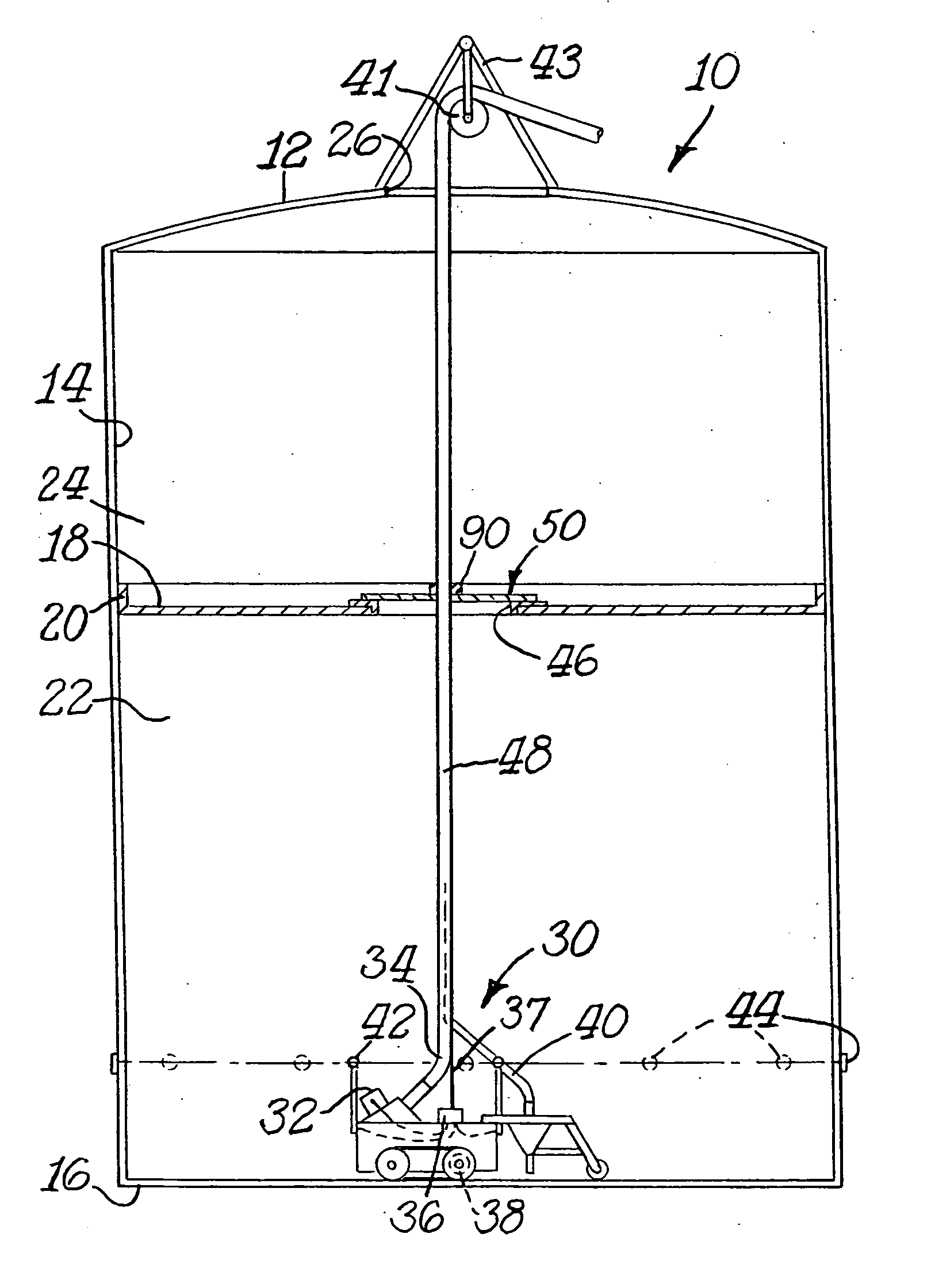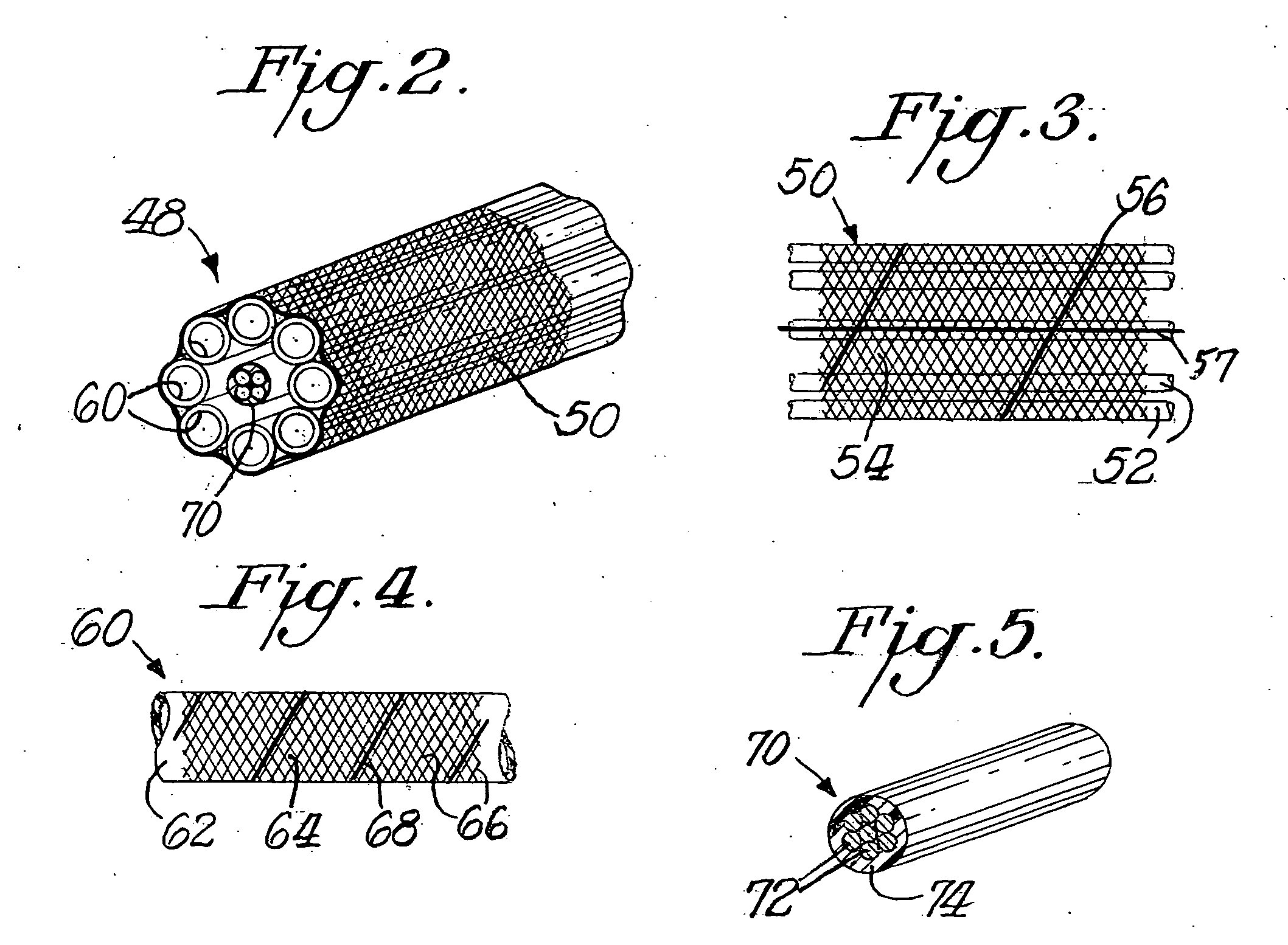Hydraulic and electric umbilical connection for an inspection vehicle for inspecting a liquid-filled tank
a technology for liquid-filled tanks and hydraulic hoses, which is applied in the direction of insulated conductors, cables, instruments, etc., can solve the problems of not being “intrinsically safe” for hydraulic hoses formed from rubber or nylon reinforced thermoplastics, affecting air quality, and affecting inspection efficiency, etc., to achieve rapid removal of equipment, less exposure to hazardous conditions, and dissipation of static charges
- Summary
- Abstract
- Description
- Claims
- Application Information
AI Technical Summary
Benefits of technology
Problems solved by technology
Method used
Image
Examples
example
[0037] The Table below sets out a strand composition for a triaxial overbraid sheath for an umbilical connection.
BiasAxialNylon coatedBiasHot meltAxialAxialVECTRAN ®0.008″ copperadhesive0.008″ copperKEVLAR ®Diameter2.752.752.752.752.75Angle62.062.0000Raw yd / lb11001754239017543144Carrier764404040Ends per carrier11211Fiber density0.052 lb / in30.322 lb / in30.041 lb / in30.322 lb / in30.052 lb / in3Part fiber 50% 50% 50% 50% 50%volumeOne layer0.01820.00010.00580.00010.0016thicknessPercent coverage59.7%1.2%20.3%10.4%oz / yd29.80.32.50.8FT / LB20.42618.689.6131.6235.8PPI8.70.40.00.00.0EPI9.8Yarn centerline0.102spacingGap size0.0625
[0038] As reported in the Table above, the “Diameter” is the nominal outer diameter of the finished braid. The “Angle” represents the angle of the bias yarns in relation to the axial yarns. The angle is reported in degrees. The “Carrier” concerns the total number of yams of a particular type running in the same direction. “Ends per carrier” concerns the number of yam ...
PUM
| Property | Measurement | Unit |
|---|---|---|
| braid angle | aaaaa | aaaaa |
| braid angle | aaaaa | aaaaa |
| braid angle | aaaaa | aaaaa |
Abstract
Description
Claims
Application Information
 Login to View More
Login to View More - R&D
- Intellectual Property
- Life Sciences
- Materials
- Tech Scout
- Unparalleled Data Quality
- Higher Quality Content
- 60% Fewer Hallucinations
Browse by: Latest US Patents, China's latest patents, Technical Efficacy Thesaurus, Application Domain, Technology Topic, Popular Technical Reports.
© 2025 PatSnap. All rights reserved.Legal|Privacy policy|Modern Slavery Act Transparency Statement|Sitemap|About US| Contact US: help@patsnap.com



